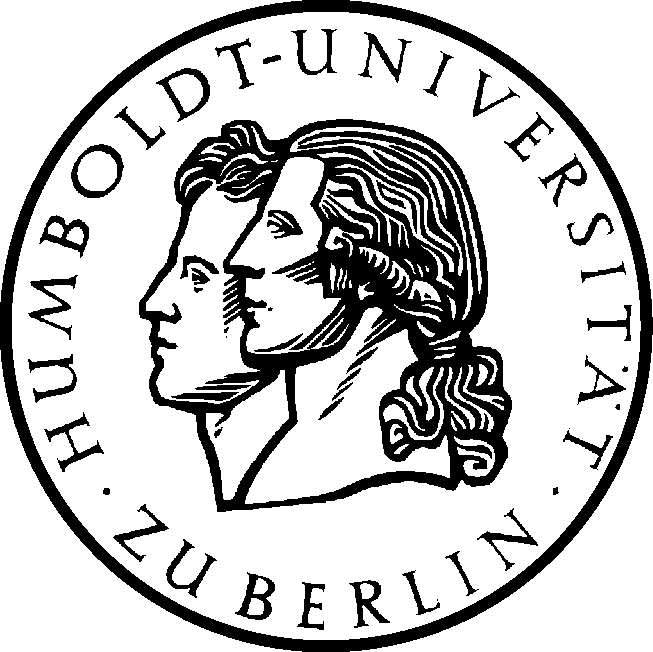Research, Hubert Truckenbrodt


| interface interactions –– wh-questions –– sentence types –– intonational meaning –– modals –– syn.-phon. interface –– f0 height –– for teachers –– neurolinguistics |
Research, Hubert Truckenbrodt |
 |
 |
|
In a cooperation project with Prof. Thomas Jacobsen, a neuropsychologist, we investigated neurophysiological correlates of phonological rules of German, or more precisely, of the phonotactic constraints underlying these rules.
We conducted a number of EEG-experiments in which we showed effects of violations of Dorsal Fricative Assimilation, which governs the distribution of ich-Laut and ach-Laut in German:
Steinberg, Johanna, Hubert Truckenbrodt & Thomas Jacobsen. 2009. Preattentive phonotactic processing as indexed by the mismatch negativity. Journal of Cognitive Neuroscience 22. 2174-2185.
Steinberg, Johanna, Hubert Truckenbrodt & Thomas Jacobsen. 2010. Activation and application of an obligatory phonotactic constraint in German during automatic speech processing is revealed by human event-related potentials. International Journal of Psychophysiology 77. 13-20.
Steinberg, Johanna, Hubert Truckenbrodt & Thomas Jacobsen. 2011. Phonotactic constraint violations in German grammar are detected automatically in auditory speech processing. Psychophysiology 48. 1208-1216.
We also looked at related methodological issues:
Steinberg, Johanna, Hubert Truckenbrodt & Thomas Jacobsen. 2012. The role of stimulus cross-splicing in an event-related potentials study. Misleading formant transitions hinder automatic phonological processing. Journal of the Acoustical Society of America 131. 3120-3140.
Jacobsen, Thomas Konstantin Jacobsen, Johanna Steinberg, Hubert Truckenbrodt & Thomas Jacobsen. 2013. Mismatch Negativity (MMN) to successive deviants within one hierarchically structured auditory object. International Journal of Psychophysiology 87.1. 1-7.
We furthermore documented neurophysiological effects of the constraint underlying German final devoicing:
Truckenbrodt, Hubert, Johanna Steinberg, Thomas K. Jacobsen and Thomas Jacobsen. 2014. Evidence for the role of German final devoicing in pre-attentive speech processing: a mismatch negativity study. Frontiers in Psychology 5.1317. 1-11.
In a cooperation project with Barbara Höhle and Isabell Wartenburger, we investigated neural correlates and the acquisition of intonation phrases. We concentrated on the three main cues final lengthening, pauses and F0 height.
We showed that eight months old children require a combination of F0 change and final lengthening for boundary recognition, while pauses play a less important role:
Wellmann, Caroline, Julia Holzgrefe, Hubert Truckenbrodt, Isabell Wartenburger & Barbara Höhle. 2012. How each prosodic boundary cue matters: Evidence from German infants. Frontiers in Psychology 3.580. 1-13.
We also showed in adults that the neural correlate of intonation phrase recognition (the closure postitive shift) can be absent for a boundary very early in the utterance (where the role of the cues plays out with lesser force):
Holzgrefe, Julia, Caroline Wellmann, Caterina Petrone, Hubert Truckenbrodt, Barbara Höhle & Isabell Wartenburger. 2013. Brain response to prosodic boundary cues depends on boundary position. Frontiers in Psychology 4.421. 1-14.
A combination of F0 change and final lengthening is required for the perception of an intonation phrase boundary by adults. Behavioral data and the neural closure positive shift as a measure of internal boundary recognition converge on showing this:
Holzgrefe-Lang, Julia, Caroline Wellmann, Caterina Petrone, Romy Räling, Hubert Truckenbrodt, Barbara Höhle & Isabell Wartenburger. 2016. How pitch change and final lengthening cue boundary perception in German: converging evidence from ERPs and prosodic judgements. Language, Cognition and Neuroscience. 1-17.
In a cooperation project with Ingo Hertrich, we investigated phonetic and neural correlates of German phonological vowel length.
Our results suggest that German has categorical perception for vowel length:
Tomaschek, Fabian, Hubert Truckenbrodt & Ingo Hertrich. 2011. Processing German vowel quality: categorical perception or perceptual magnet effect?. In ICPhS (ed.), Proceedings of the 17th International Congress of Phonetic Sciences (DVD).
We furthermore think that we found a neurophysiological correlate, a little intensity peak in the processing of a long vowel, corresponding to the "realization" of the brain that it is facing a long, instead of a short vowel (or, if you will, the recognition of the second mora of the long vowel):
Tomaschek, Fabian, Hubert Truckenbrodt & Ingo Hertrich. 2013. Neural processing of acoustic duration and phonological German vowel length: Time courses of evoked fields in response to speech and nonspeech signals. Brain and Language 124.1. 117-131.
We studied the interaction of the perception of vowel length with the tense-lax contrast as assessed in F1, in a new kind of two-dimensional perception experiment. Our results support the view that length is the primary feature and the tense-lax contrast is secondary:
Tomaschek, Fabian, Huber Truckenbrodt & Ingo Hertrich (2015). Discrimination sensitivities and identification patterns of vowel quality and duration in German /u/ and /o/ instances. In A. Leemann, M.-J. Kolly, S. Schmid & V. Dellwo (Eds.), Trends in Phonetics and Phonology - Studies from German-Speaking Europe (pp. 197-210). Bern: Peter Lang.